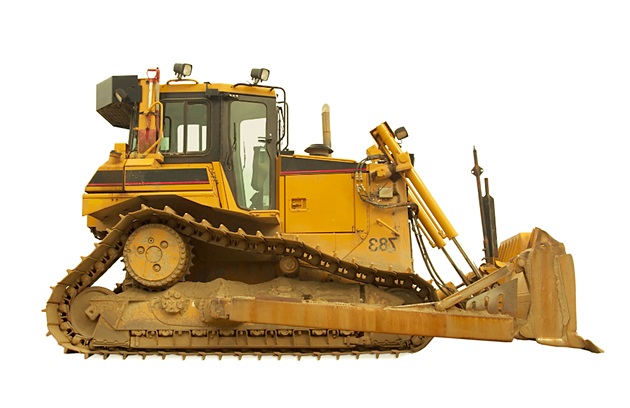
According to the latest estimate published by Fredonia, the global construction equipment market was valued at $190.23 billion in 2023 and is expected to grow at a CAGR of 8.7% from 2023 to 2032. It is anticipated that the construction industry will thrive, and the introduction of modern automation technology will have a positive impact on the construction equipment market, as shown in the cited analysis.
General Considerations
Expanding infrastructure projects in developed and developing countries, rapid urbanization, and industrialization are important factors driving revenue growth in the market.
The construction equipment market is engaged in the production and distribution of various heavy machinery and equipment, including excavators, loaders, bulldozers, cranes, and other types of machinery.
There is a growing demand for construction equipment in end-user sectors, including industrial, residential, and commercial sectors, due to increasing demand for infrastructure development in regions.
Governments worldwide are also making significant expenditures to expand infrastructure, which is expected to fuel market revenue growth. For example, the Smart Cities Project launched by the Indian government aims to build 100 smart cities across the country, which will increase the demand for construction equipment in the coming years.
Market Elements
Construction equipment refers to a broad category of tools, machines, and specialized equipment used in the construction industry to perform various activities such as concrete pouring, demolition, material handling, excavation, and road construction.
These types of equipment significantly contribute to the efficiency, safety, and productivity of construction projects, making them a cornerstone of modern construction practices. The implementation and integration of advanced technology into construction equipment have revolutionized the global construction industry, allowing engineers and skilled professionals to complete complex projects faster and more accurately.
Construction equipment represents a crucial set of tools designed for the construction sector. Each type of equipment/machinery is designed to perform specific tasks, optimizing the construction process and reducing the need for manual labor.
These machines and tools are diversified and versatile, meeting the varied needs of different construction projects, such as tall structures, large-scale mining activities, and transportation infrastructure development.
The fundamental purpose of construction equipment is to increase production efficiency and, ultimately, accelerate processes by performing activities that are impractical, hazardous, or time-consuming for human workers.
Market Dynamics
The increasing demand for construction equipment in mining activities and mining activities in general, from both developed and developing regions worldwide, is on the rise in the current scenario.
The growth in demand for construction equipment in mining activities is the primary factor influencing market growth and development. There has been steady economic growth in developed and developing countries, leading to a strong demand for minerals, including gold, silver, copper, iron, aluminum, and other minerals and metals.
This factor has increased the demand for construction equipment globally. Additionally, the increasing demand for excavators in the oil and gas industry and construction industry is anticipated to significantly increase surface mining equipment.
The mining industry has substantially grown due to the increased use of compact excavators. Additionally, leading mining equipment manufacturers are thriving in product development and research and development (R&D) operations for underground mining applications. Thus, these factors are driving market growth.
Constraints
Probable constraints will be associated with high ownership costs. The most significant aspect of construction equipment ownership costs is the initial capital investment required to purchase the equipment.
Bulldozers, excavators, and other types of machinery are considered high-value assets that frequently require significant capital expenditure. This initial outlay could be a substantial deterrent for small and medium construction enterprises or entrepreneurs with limited financial resources.
As a result, they may alternatively opt for assets such as equipment leasing or renting, which may not always be the most feasible option in the long term. Regular maintenance is required for construction equipment to ensure optimal performance and lifespan. Maintenance costs include:
- Routine service.
- Replacement of worn parts.
- Addressing mechanical or electrical issues that may arise during operation.
These costs can be significant, especially for complicated and sophisticated machinery. Additionally, unexpected equipment failures can lead to downtime, project completion delays, and increased operational costs.
Opportunities
Opportunities are provided by technological advancements. In the current scenario, technology has become essential for organizations involved in the construction industry as automation continues to gain momentum. Key players are focusing on reducing operational costs, along with equipment maintenance.
Additionally, the industry has witnessed the widespread adoption and implementation of several technological advancements, including smart sensors, robotics and automation, and other technologies to enhance operational efficiency.
For example, in January, ABB Ltd. launched the Ability Smart sensor for assessing the condition of mounted bearings to prevent downtime in mining during material handling. It is anticipated that the demand for eco-friendly equipment due to durability will increase exponentially. There is a persistent shift towards renewable energy, which has increased the demand for minerals and, consequently, mining activities.
This state of affairs has enabled companies to strengthen their commercial ventures to offer extra-efficient devices with minimal environmental impact.
For example, advanced control technologies in Komatsu Ltd.'s Autonomous Haulage System (AHS) reduce fuel consumption, tire wear, and emissions. Thus, it is anticipated that these factors will provide profitable growth opportunities in the coming years.
Regional Segmentation Analysis
The regions analyzed for the market include Europe, North America, South America, Asia Pacific, and the Middle East and Africa. Asia Pacific has emerged as the largest market for the global construction equipment market, with a share of 44.0% of market revenues in 2023.
The region is expected to grow at the highest CAGR during the forecast period. Regional growth and development are driven by rapid industrialization, large-scale infrastructure projects, and significant investments in construction.
Additionally, players in the regional market are engaged in various market strategies such as mergers, acquisitions, partnerships, and strategic alliances to maintain their competitive advantage. Market share of construction equipment in the Asia Pacific region in 2022 - 44.0%
Type Segment Analysis
The type segment is divided into earthmoving machinery, material handling machinery, concrete and road construction machinery, and others. The earthmoving machinery segment dominated the market, with a market share of approximately 53% in 2023.
Excavators, loaders, and others are prominent types of machinery considered in the earthmoving equipment category. The government's vision to support transportation through considerable expenditures on infrastructure projects, such as creating a well-connected and robust road network, enhances the growth of the segment.
Additionally, the extensive need for excavation in limited locations during construction has led to the widespread use of excavators, significantly contributing to the expansion of the global market.
Furthermore, government regulations regarding emissions and noise encourage the development of quieter and eco-friendly excavators, which are expected to fuel the growth of this market in the coming years.
Application Segment Analysis
The application segment is divided into industrial, residential, and commercial. The residential segment dominated the market, with a market share of approximately 47% in 2023. Population growth, urbanization, and the demand for housing drive the residential sector's contribution to the global construction equipment market.
Construction projects in the residential sector include housing developments, apartment complexes, and individual residential units. Population expansion, followed by rapid urbanization, has stimulated the demand for residential real estate.
Loaders, concrete mixers, and excavators are considered essential machinery for residential project construction. Governments and corporate organizations are investing in affordable housing programs to address housing shortages and provide housing solutions for low-income individuals.
This has led to extraordinary residential construction activity in developing countries. This is expected to have a positive impact on the development of the global market.
Distribution Channel Analysis
The distribution channel segment
is divided into OEM and aftermarket. The OEM segment dominated the market, with a market share of approximately 55% in 2023. OEMs offer various construction equipment, such as excavators, bulldozers, cranes, loaders, and specialized equipment for diverse construction applications.
The diverse product portfolios of OEMs allow them to meet a wide range of customer needs and project specifications. In the construction industry, established OEMs have influential reputations, followed by brand recognition.
Customers often prefer reputable companies due to the reliability, quality of the product OEMs offer, and after-sales services. These factors drive the growth and development of the segment.
Market Players
Key market players remain the same:
AB Volvo, Deere & Company, Komatsu Ltd., Hitachi Construction Machinery Co. Ltd., Sany Group, XCMG, JCB, Liebherr Group, Zoomlion Heavy Industry Science & Technology Co. Ltd., Doosan Infracore Co. Ltd., Caterpillar Inc., Terex Corporation, CNH Industrial, Kobelco Construction Machinery Co. (Photo: Dreamstime)




